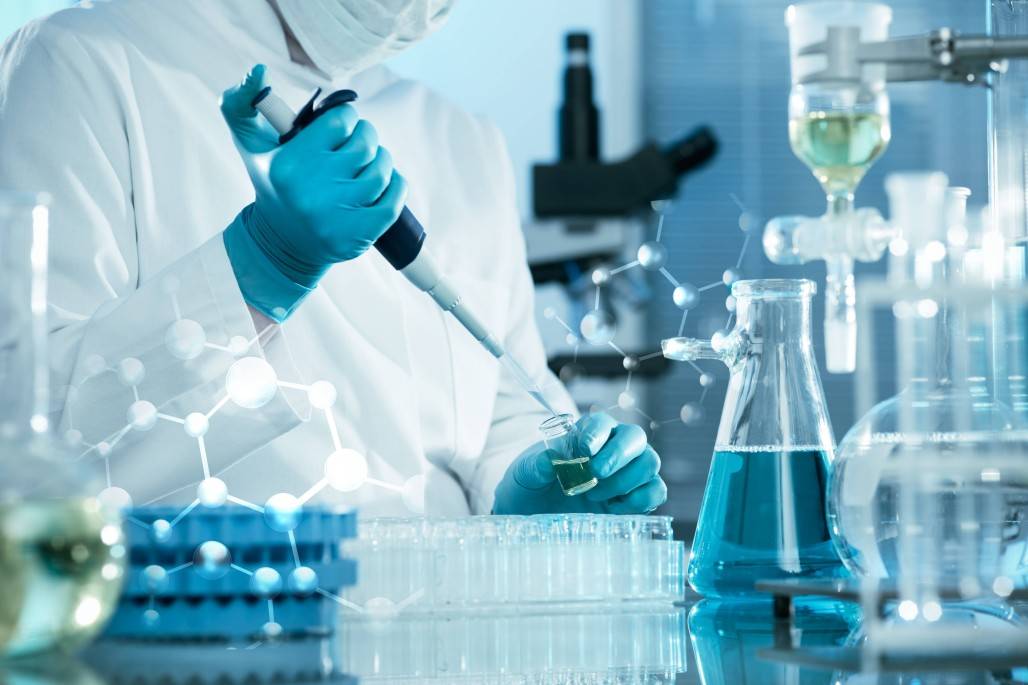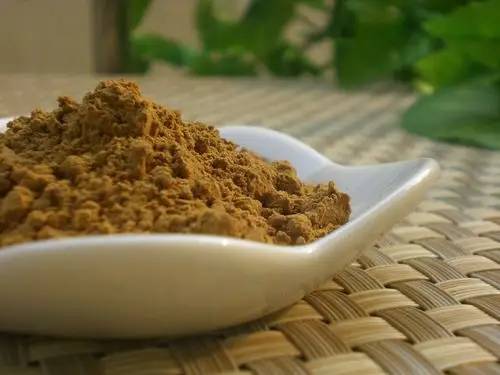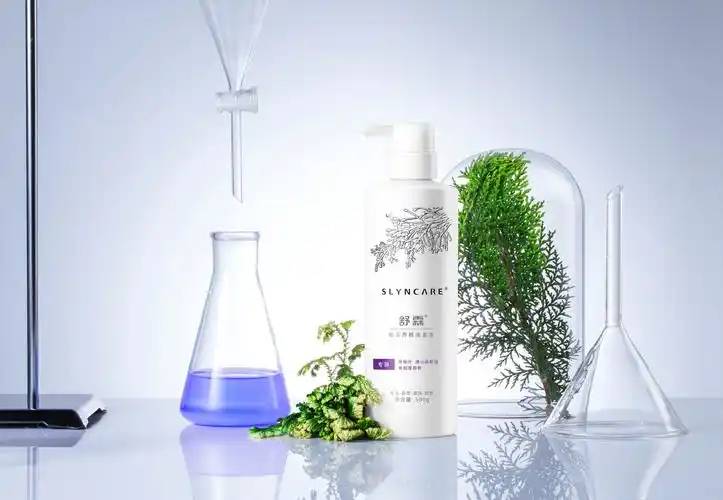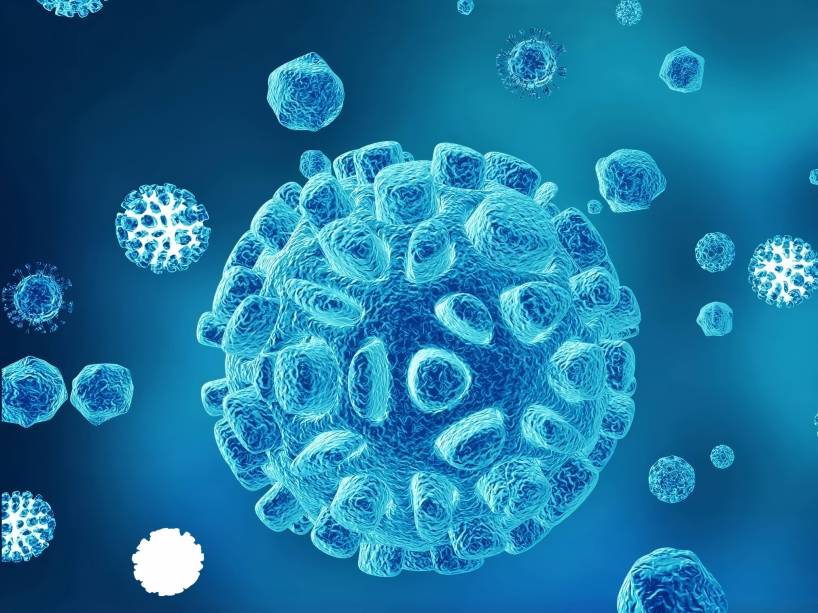What Are the Benefits of Pomegranate Peel Extract Polyphenol?
Pomegranates are a food with medicinal properties that have important practical applications. Fresh pomegranates are edible and have a sweet and sour taste; pomegranate juice can be used as a drink and has a whitening effect; pomegranate seeds can be used to extract oil, which is rich in pomegranate acid (9c, 11t, 13c-C18:3) and has antioxidant, anti-inflammatory and anticancer effects [1]; pomegranate peel can be used in traditional Chinese medicine and has the effects of astringing the intestines to stop diarrhea, stopping bleeding, and expelling worms [2].
In recent years, research on the composition of pomegranate peel has become increasingly clear [3]. Studies have found that pomegranate peel is rich in polyphenols, mainly including flavonoids (mainly quercetin) and tannins (mainly punicalin, punicalin and ellagic acid); in addition, it also contains organic acids, phenolic acids, steroids, terpenes, fatty acids, triglycerides and alkaloids [4]. Studies have shown that pomegranate peel polyphenols have good antioxidant properties and have application prospects as natural antioxidants in the food industry [5-7].
Pomegranate peel contains a wide range of tannins (tannins) in high concentrations. Pomegranate peel tannins mostly exist in a free form, most of which are hydrolysed tannins and condensed tannins, with a small number existing in a bound form [8]. Pomegranate peel tannins have high water quality requirements because they are very sensitive to metal ions in water (research has shown that the amount of pomegranate peel tannins extracted in pure water is nearly 30 times that in drinking water). In recent years, with the advancement and development of extraction technology, there have been an increasing number of methods for extracting polyphenols from pomegranate peel [10].
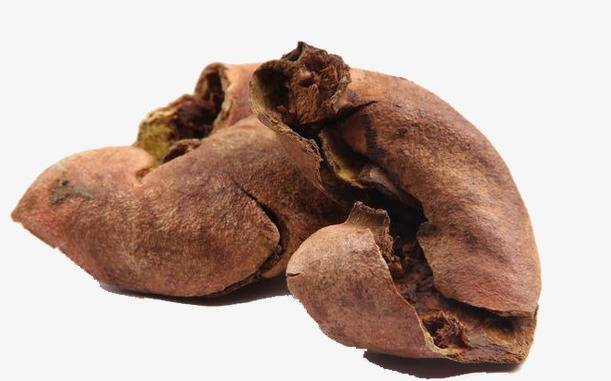
However, the complexity of the composition of pomegranate peel and the lack of commercially valuable standards mean that the extraction of pomegranate peel polyphenols still faces many problems. At present, the methods for extracting polyphenols from pomegranate peel mainly focus on crude extraction with ethanol [11]. After extraction, the extract is enriched using macroporous resin, which can greatly improve the purity of the polyphenols, but the recovery rate of polyphenols is low, and the prospects for industrial application are poor. In addition, due to incomplete extraction and purification, the large number of detected components makes separation difficult, and the poor solubility of some polyphenols is also a major factor restricting the development of detection methods.
Punicalin and ellagic acid are the main components of the polyphenols in pomegranate peel [12]. In recent years, they have attracted widespread attention due to their medical effects, such as anti-inflammatory and antibacterial, scavenging free radicals [13], anti-tumor and anticancer [14], and improving immunity [15]; in addition, punicalin and ellagic acid have many functions in the food industry, such as preventing lipid oxidation, delaying the formation of toxic oxidation products and extending the shelf life of food. Pomegranate has attracted widespread attention for its many functions, such as anti-tumor and anti-cancer [14] and improving immunity [15]. In addition, punicalin and ellagic acid have many functions in the food industry, such as preventing lipid oxidation, As far as current research is concerned, there are various methods for extracting ellagic acid, but they are all inefficient, result in high losses, have low yields and are not environmentally friendly. Poor solubility is a major factor limiting their development.
This paper reviews the current research status of punicalin and ellagic acid, the main components of pomegranate peel polyphenols. It introduces the purification and detection of pomegranate peel polyphenols and their functions, the conversion of the two isomers of punicalin, and the dissolution and enrichment of ellagic acid, with the aim of providing a reference for the research on the extraction, detection and modification of pomegranate peel polyphenols.
1 Progress in the extraction and application of pomegranate peel polyphenols
1.1 Crude extraction of pomegranate peel polyphenols
At present, the extraction of pomegranate polyphenols mainly relies on the combination of solvents and auxiliary methods (ultrasonic waves [17–18], microwaves [19–20], ultra-high pressure [21–22], enzymatic methods [23], supercritical technology [24], etc.), and most phenols are extracted using organic solvents such as water or methanol, ethanol, acetone, etc. [25–26]. Among them, methanol can dissolve low molecular weight tannins and can also extract a large amount of enzymes from pomegranate peel. Therefore, after extraction, the sample usually needs to be de-extracted to prevent reaction [27], while acetone is the first choice for extracting high molecular weight tannins [28].
When most organic solvents are used to extract the polyphenols from pomegranate peel, the extracted components are complex and not conducive to analysis and purification. At the same time, the extraction is not thorough, and a certain amount of polyphenols (mainly bound polyphenols) and ellagic acid, which is difficult to dissolve in water, remain unextracted [29]. Some solvents exhibit superior solubility for pomegranate peel polyphenols, but there are problems such as being harmful to the human body, flammable and explosive, and difficult to separate and purify. The crude polyphenols extracted with organic solvents are further purified by using macroporous resin [30]. However, there are problems such as the long time taken for adsorption and desorption, and the fact that some polyphenols cannot be eluted.
In recent years, eutectic solvents have attracted widespread attention in the extraction of natural products due to their high solubility, degradability and environmental friendliness [31]. However, there are no reports on their application in the extraction of pomegranate peel polyphenols.
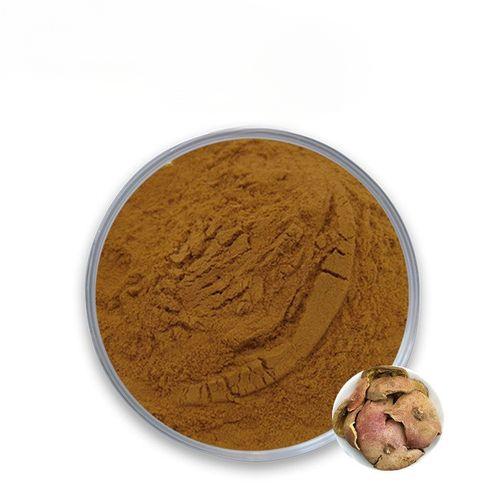
1.2 Purification and detection of pomegranate peel polyphenols
The purification of crude pomegranate peel polyphenol extracts is mostly carried out in two steps. The first step is purification by high-speed countercurrent chromatography, and the second step is adsorption on a column (mostly a reverse-phase column) [32]. This greatly improves the purity of pomegranate peel polyphenols, especially the purity of punicalin. At present, the purification of punicalin has reached a high level, as shown in Table 1, and the purity of punicalin can reach more than 90%. Since punicalin has isomers [33-34], reversed-phase high performance liquid chromatography (reversed-phase high performance liquid chromatography, RP-HPLC) is currently used to detect punicalin [35]. RP-HPLC can separate and measure the two isomers of punicalin [36-37]. In addition, it has been found that the two punicalins can be converted into each other under certain ratios and pH values, but the specific reasons for their conversion are unknown [38-39].
1.3 Research progress in the application of pomegranate peel polyphenols
1.3.1 Antioxidant effect of pomegranate peel polyphenols
In the food industry, the antioxidant properties of pomegranate peel polyphenols have received widespread attention. It represents one or more natural antioxidants. Harada et al. [41] found that free pomegranate peel polyphenols are the main polyphenol components, and the antioxidant capacity of free pomegranate peel polyphenols is 10-20 times that of bound forms. There is not much difference in the antioxidant properties of the outer, middle and inner layers of the pomegranate peel.
Huang Daichun et al. [42] used a macroporous resin to purify the polyphenols to a purity of about 90%. The effect of removing 1,1-diphenyl-2-picrylhydrazyl (2,2-diphenyl-1-picrylhydrazyl, DPPH) free radicals and hydroxyl radicals was far superior to that of the crude extract, but the difference in removal rate compared to vitamin C was significant. Tang Yuanmou et al. [43] compared the in vitro antioxidant effects of various polyphenols, using gallic acid and pomegranate peel extract as references. They found that the scavenging rates of gallic acid and pomegranate peel extract for DPPH free radicals, hydroxyl free radicals and superoxide anion free radicals were different. Pomegranate peel polyphenols have strong in vitro antioxidant effects.
On the other hand, studies have shown that pomegranate peel polyphenols have better antioxidant properties than 2,6-di-tert-butyl-4-methylphenol (BHT) and butylated hydroxy anisole (BHA) [44]. Xie Zhenjian et al. [44] compared the ability to inhibit the oxidation of soybean oil under the same storage time and addition amount, and found that the order of antioxidant capacity was pomegranate peel extract > tea polyphenols > BHA > bamboo leaf extract > licorice extract > rosemary extract > BHT. This shows that pomegranate peel polyphenols have application prospects for use as a natural antioxidant in oils and fats to replace the traditional tert-butylhydroquinone (TBHQ). Current research indicates that TBHQ poses potential risks to the human body, and the European Union has banned the addition of TBHQ to cooking oil. In contrast, countries such as China and the United States still use TBHQ as an antioxidant in cooking oil. In the future development of antioxidants, natural antioxidants will inevitably replace traditional chemical synthetic antioxidants due to their advantages of being naturally sourced, renewable, and environmentally friendly. However, pomegranate peel polyphenols are only slightly soluble in oil, so in the future, the focus of research will be on modifying pomegranate peel polyphenols to improve their fat solubility while retaining their antioxidant capacity.
1.3.2 Inhibitory effect of pomegranate peel polyphenols on lipase
In addition to their excellent antioxidant properties, pomegranate peel polyphenols have been found to have other important functions. As early as 2005, researchers found that polyphenols extracted from tea have an inhibitory effect on lipase, with gallic acid showing the most prominent inhibitory effect [45]. Previous studies have shown that the phytochemicals of pancreatic lipase inhibitors mainly include saponins, polyphenols, flavonoids, terpenes and caffeine [28]. According to relevant patents, ellagitannins with a hexahydroxydiphenyl group (HHDP) also have good inhibitory effects. It is known that the HHDP group exists in the pomegranate peel polyphenols punicalin and ellagic acid [46].
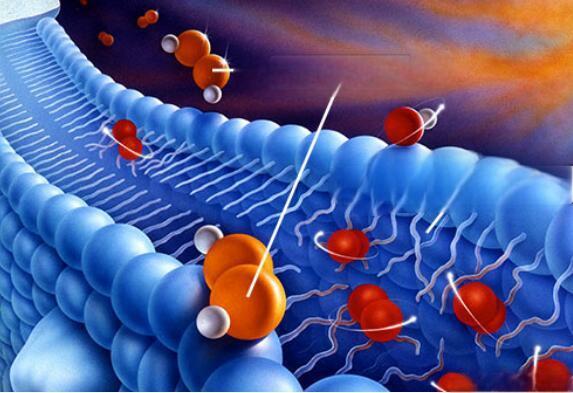
Poubelle et al. [47] applied purified pomegranate peel polyphenols to lipase, and the results showed that pomegranate peel polyphenols had an inhibitory effect on lipase. Therefore, polyphenols can be added to neutral fats to inhibit lipase from using neutral fats, and related products can be developed to reduce the obesity rate. More importantly, the addition of pomegranate peel polyphenols does not change the flavor of the oil, so it can be added to products such as butter, ice cream, and cream to reduce the body's absorption of fat and make the products healthier [28]. In addition, some studies have reported that pomegranate peel polyphenols can cause the color of fats and oils to darken, but the specific mechanism of their effect on the color of fats and oils is not yet clear [45].
1.3.3 Pomegranate peel polyphenols' scavenging of nitrite and antibacterial effects
Pomegranate peel polyphenols have the effect of removing nitrite and blocking the synthesis of nitrosamines. Green vegetables are an important source of dietary nitrate. Nitrate and nitrite can be used as preservatives and colorants and have a wide range of uses in food [44]. However, nitrosamines, as precursors of N-nitrosamines, pose a threat to human health. Studies have found that pomegranate peel polyphenols can remove nitrites, and that the inhibitory effect of pomegranate polyphenols on nitrosamines increases with concentration and time, and all exhibit strong inhibitory ability at 100 °C [48]. In addition, pomegranate peel polyphenols also exhibit good antibacterial effects. Studies have shown that when acetone-extracted polyphenol solution is applied to microorganisms such as Staphylococcus aureus, Shigella dysenteriae, Salmonella and Escherichia coli, it exhibits significant antibacterial effects. The minimum inhibitory concentration for Escherichia coli is 3.9 μmol/mL, and the minimum inhibitory concentration for Shigella dysenteriae is 7.8 μmol/mL [49].
2 Punicalagin
Punicalagin (PC) is one of the components of the polyphenols in pomegranate peel. As a hydrolysable tannin, it is easily soluble in water and soluble in organic solvents such as methanol, ethanol and acetonitrile. It is chemically unstable and easily decomposes under high temperatures or light [50]. The laboratory mainly uses acid hydrolysis to obtain punicalagin. The relative molecular weight of punicalagin is 1,083, and its chemical formula is C48H28O30. The molecular structure contains multiple phenolic hydroxyl groups, which gives it good antioxidant properties. The structure of punicalagin contains a hexahydrophenol unit, a gallagyl unit and a glucose unit [51]. In addition, research has found that there are two isomers of punicalin [47]. After the pomegranate peel is extracted and purified, the product contains more than 70% punicalin, and punicalin is also the highest quality among the pomegranate peel polyphenols, accounting for up to 28.73%, followed by ellagic acid 6.23% [35].
The current research on the hydrolysis of punicalin mainly focuses on acid hydrolysis. Punicalin hydrolysis can produce one molecule of ellagic acid and one molecule of punicalin, so punicalin is an important source of ellagic acid. Punicalin is also chemically unstable and can break down into gallagic. The complete hydrolysis products of punicalin are ellagic acid and gallagic [52]. Punicalin has one less HHDP group than punicalin, and its molecular structure contains 10 phenolic hydroxyl groups, which also have excellent antioxidant capacity [50]. Studies have found that after taking a large amount of punicalagin, the punicalagin content in human plasma is not high, and the presence of punicalagin in the human circulatory system is almost undetectable, with only trace amounts of ellagic acid [32].
3. Ellagic acid
Ellagic acid (EA), also known as 1,2,3,4,6,7-hexahydroxy-9,10-dioxoanthracene-2-carboxylic acid, has the molecular formula C14H6O8 and a relative molecular mass of 302. Ellagic acid is a polyphenolic diol ester with a molecule containing four ester groups, four phenolic hydroxyl groups and two ester rings. It is this special structure that makes it very poorly soluble in both water and fat[53].
It is slightly soluble in alcohol, soluble in alkali and pyridine, and insoluble in ether. Ellagic acid also reacts with ferric chloride to form a blue color, and with sulfuric acid to form a yellow color. Ellagic acid is also prone to bind to metal cations such as magnesium ions[16]. The low solubility of ellagic acid in most organic solvents makes it easy to separate. Currently, acid hydrolysis and base hydrolysis are the main methods for preparing ellagic acid. The sources of ellagic acid in pomegranate peel polyphenols are diverse: free ellagic acid, condensed ellagitannins, hydrolysis of punicalin, and glycosides. The sources of ellagic acid are shown in Figure 1. Among them, the free state is the main form of ellagic acid, and ellagic acid combined with ellagitannins and glycosides is also an important source of free ellagic acid.
3.1 Extraction of ellagic acid
The isolation of ellagic acid depends on its solubility. Free ellagic acid is in the form of oil droplets and is poorly soluble in water, making it relatively easy to isolate. At the same time, ellagic acid is chemically stable and has high utilization value. Secondly, there are various simple detection methods for high-purity ellagic acid, the most common of which are ultraviolet-visible spectrophotometry and high-performance liquid chromatography [54-57], as shown in Table 2.
3.2 Preparation of ellagic acid—acid hydrolysis and biosynthesis
Studies have found that ellagic acid mainly comes in two forms: free and bound [62]. Current research is aimed at improving the yield of ellagic acid by controlling the conditions of acid hydrolysis, such as acid concentration, type of reaction solution, temperature and time, to achieve the hydrolysis of ellagitannins and ellagic acid glycosides. García-Villalba et al. [51] hydrolyzed ellagitannins at 90 °C using a 4 mol/L hydrochloric acid solution, and secondary hydrolysis using methanol/dimethyl sulfoxide revealed that punicalin α, punicalin β and punicalin could be almost completely hydrolyzed, and the content of ellagic acid could reach 260.8 mg/g.

Acetone/water was also used for preliminary extraction, concentrated and freeze-dried, and then acid hydrolysis was tested. The results showed that the effect of hydrolysis in pure water was better than that in methanol (in methanol, methylation derivatives are easily produced). Since hydrolysis still resulted in a large number of ellagic acids forming small spheres with the particles, leading to significant losses, the researchers used dimethyl sulfoxide/methanol to dissolve this part of the ellagic acid. The results showed that compared to direct hydrolysis, the ellagic acid content increased by nearly 5 times, and dimethyl sulfoxide also showed good extraction results for gallagic. Hydrolysis of ellagic acid reached equilibrium in 4 h, but complete hydrolysis still required 24 h [51]. The main problem at this stage is that the hydrolysis time is too long. However, it is still difficult to separate ellagic acid and gallagic acid present in the solvent.
The biosynthesis method uses microorganisms such as Aspergillus niger and Candida utilis to synthesize ellagic acid from gallic acid as a raw material through esterification and oxidation polymerization [62]. Similar to the chemical synthesis method, the process is complex and difficult to control, and separation is difficult. The reaction time is too long, and practical application is difficult. Although it is still in the laboratory research stage, it has good development prospects as a green and environmentally friendly method. In addition, microbial hydrolases can be used to act on ellagic acid bound to glycosides. Related studies have shown that the ellagic acid content obtained after treating the residue after extraction with hydrolases is higher than that obtained by direct extraction [61].
4 In vivo metabolism of punicalagin and prospects for application in food
Studies have found that when using rats to study the metabolism of punicalin in the body, it is found that the intestinal microorganisms in the rat intestine first break down punicalin into ellagic acid, which is further broken down to form urolithins with a lower molecular weight. Urolithins are then absorbed by the rat and go on to play an important role in the organism [63-65]. Yin Peipei et al. [65] described the biological activity of urolithins as a metabolic product of ellagic acid. Urolithins have similar biological activities to those of punicalin and ellagic acid, such as antioxidant, anti-inflammatory, and anti-cancer activities.
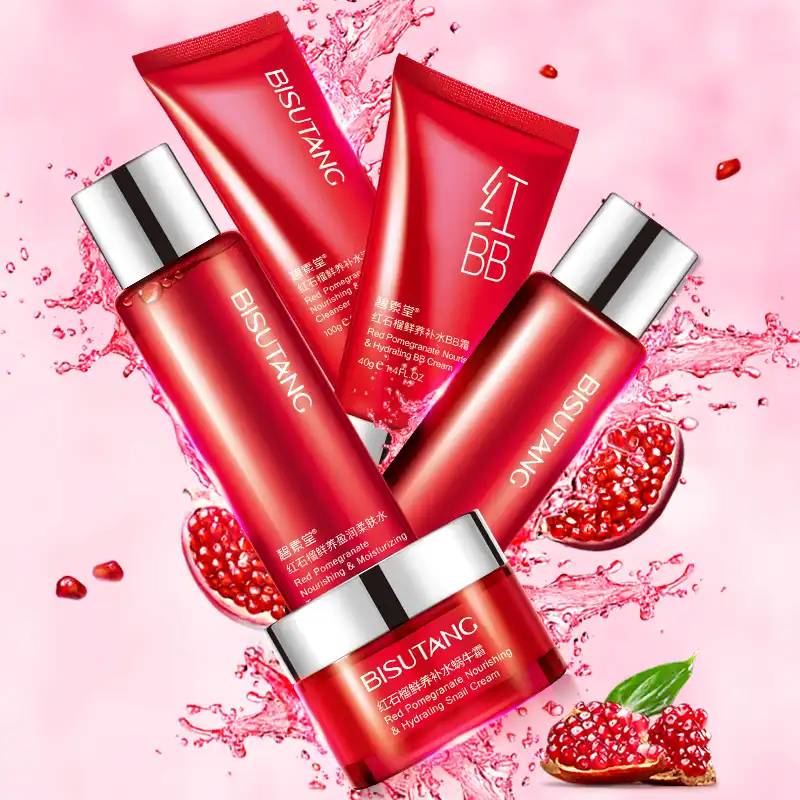
Some studies have reported that pomegranate peels grown in different regions of China differ, as evidenced by the different proportions of punicalin and ellagic acid, but the total content of the two is very similar [39]. Punicalin is chemically unstable and has a high molecular weight, so its use in food is more limited. Ellagic acid, on the other hand, is abundant in nature and quite stable. Therefore, further improving the extraction efficiency and purification effect of ellagic acid, reducing losses and increasing the yield has become one of the important research directions. However, the poor solubility of ellagic acid is also its biggest constraint. Therefore, in order to expand its application fields, modifying ellagic acid to improve its fat solubility as much as possible while maintaining its antioxidant properties has become a feasible solution. Modified ellagic acid can be used in a wider range of food applications: firstly, modified ellagic acid can be used as an antioxidant in edible oils, as it is “considered natural and has complementary functions”; secondly, ellagic acid can be used in the development of products in the fields of food, cosmetics and medicine, as it has functions such as anti-aging, scavenging free radicals and improving resistance.
5 Conclusion
Pomegranate peel has attracted much attention due to its rich polyphenols and the versatility of their functions. As the highest content of punicalin has a complex structure and is chemically unstable, it is difficult to apply. The structure of ellagic acid is simple and stable, making it an ideal product for application. At present, although ellagic acid is abundant in sources, it faces difficulties such as low efficiency of extraction and hydrolysis, and difficulty in dissolving and purifying. There are also many problems, such as the lack of standards for the detection of polyphenols in pomegranate peel, the overly simple preparation methods, and the lack of food applications. The fundamental reason limiting the development of ellagic acid is its solubility. To address this problem, chemical modification of the phenolic hydroxyl groups of ellagic acid can be used to improve its solubility. Chemical modification using lipase and long-chain fatty acids is a green and efficient method. In addition, new methods for dissolving ellagic acid can be used, such as the currently popular green solvents, such as eutectic solvents.
Reference:
[1]DHAR DUBEY K K, SHARMA G, KUMAR A. Conjugated linolenic acids: Implication in cancer [J] . Journal of Agricultural and Food Chemistry, 2019, 67(22): 6091-6101.
[2]National Pharmacopoeia Commission. Pharmacopoeia of the People ’s Republic of China[M]. Beijing: China Medical Science and Technology Press, 2015: 93.
[3]HAN Lingling, YUAN Zhaohe, FENG Lijuan, et al. Optimization of detection system for polyphenol and its compositions and contents in different parts of pomegranate fruit[J] . Shandong Agricultural Sciences, 2012, 44(11): 112-116.
[4]Rahima Abdulla, LAI Haizhong, LIU Zhaosheng, et al. A study on the preparation techniques of extracting polyphenols from the peri - carpium granati(Punica granaum L.)[J]. Journal of Xinjiang Medical University, 2013, 36(6): 723-728.
[5]TANG Pengcheng, JIAO Shirong, TANG Yuanmou, et al. Compari - son and study on the antioxidant activity of pomegranate peel extract [J]. Food Research and Development, 2012, 33(1): 12-15.
[6]LI Jianke, LI Guoxiu, ZHAO Yanhong, et al. Composition of pomegranate peel polyphenols and its antioxidant activities[J]. Sci - entia Agricultura Sinica, 2009, 42(11): 4035-4041.
[7]TANG Lili, ZHANG Peng. Research progress of polyphenols in pomegranate peels[J]. Academic Periodical of Farm Products Process - ing, 2014(23): 58-59, 63.
[8]ZHENG Bisheng, CAO Shuang, ZHONG Wei. Analysis of phenolic compounds and antioxidation in different cultivar guavas[J] . Food Science and Technology, 2014, 39(12): 225-230.
[9]ZHENG Xin, CHANG Zhanying, NIE Changhong, et al. Effect of water quality on the extraction and purification of punicalagin from pomegranate peel[J]. Journal of Food Safety & Quality, 2019, 10(4): 934-937.
[10]WU Jianhua, WU Zhigui, PEI Jingguo, et al. Advances in studies on polyphenols[J]. Modern Chinese Medicine, 2015, 17(6): 630-636.
[11]WANG Zhou, ZHANG Chixiang, PU Bo, et al. Study on the extrac - tion of total polyphenols and antioxidant activity of pomegranate peel by solvent refluxing method[J]. The Food Industry, 2015, 36(7): 57-62.
[12]ZHOU Benhong, YI Huilan, GUO Xianxi, et al. Preliminary analysis of tannin-related constituents in pomegranate peel by HPLC-ESI- MS[J]. China Pharmacist, 2015, 18(2): 201-204.
[13]CHANG Jing, TIAN Li. Progress in the extraction technology and detection methods of pomegranate polyphenols[J]. Chinese Journal of Information on Traditional Chinese Medicine, 2014, 21(12): 133-136.
[14]LIU Yanze, LI Haixia.Tanning and polyphenolic ingredients in pomegranate peels[J]. Chinese Traditional and Herbal Drugs, 2007, 38(4): 502-504.
[15]YANG Xiaojing, ZHAO Bo, NA Ke, et al. Research progress of pomegranate polyphenols in pomegranate peels[J]. Chinese Journal of Pharmaceuticals, 2013, 44(5): 509-514.
[16]GAO Xinpeng, ZHANG Lihua. Research progress on preparation of ellagic acid from pomegranate peel[J]. Modern Agricultural Science and Technology, 2020(14): 218-220.
[17]DENG Na, QIAO Shen, GAO Xin, et al. Optimization of extraction process of polyphenols from pomegranate peel by response surface methodology and antioxidant activity analysis of polyphenols in dif- ferent parts of pomegranate fruit[J]. Food Science, 2016, 37(6): 39- 43.
[18]FANG Yulin, QI Di, GUO Zhijun, et al. Ultrasonic-assisted extrac - tion of total polyphenols from pomegranate peels[J]. Food Science, 2012, 33(6): 115-118.
[19]LI Zhizhou, LIU Junhai. Optimization of extraction technology of polyphenols from pomegranate peer and anti-oxidation property of the extracts[J]. Food and Fermentation Industries, 2009, 35(11): 152- 155.
[20]WANG Wei, YANG Xiaoling, FAN Hanyan, et al. The microwave assisted extraction and antimicrobial activity for the tannin from hetian pomegranate seeds-skin[J]. The Food Industry, 2012, 33(9): 40-43.
[21]JIAO Shirong, WANG Ling, CHEN Mingxia. Study on ultrasonic as - sisted extraction of total polyphenol from pomegranate peel and an - tioxidant activity [J]. Journal of Xihua University (Natural Science Edition), 2009, 28(1): 60-62, 80.
[22]YAN Longbing, LIU Linwei, LIU Xiaoli, et al. Research on ultrahigh pressure extraction technology for producing pomegranate peel polyphenol[J]. Journal of Chinese Institute of Food Science and Tech - nology, 2012, 12(9): 41-49.
[23]WANG Huabin, WANG Shan, FU Li. Study on technology of ex- tracting polyphenol from pomegranate peel by enzymic treatment[J]. Journal of Chinese Institute of Food Science and Technology, 2012, 12(6): 56-65.
[24]WANG Zhanyi, DAI Bo, WANG Yuhai, et al. Optimization of preparation process of pomegranate peel polyphenols liposomes [J]. Chinese Journal of Experimental Traditional Medical Formulae, 2015, 21(5): 33-37.
[25]TANG Yuanmou, ZHOU Jinyang. The antioxidant activity of pomegranate peel polyphenols in vitro[J]. The Food Industry, 2016, 37(1): 164-167.
[26]TANG Lili, LIU Linwei, ZHU Zhanbin. Comparing antioxidant ca - pacities of pomegranate peel extracts in different phases[J] . Food Research and Development, 2015, 36(10): 30-34, 69.
[27] ARAPITSAS P. Hydrolyzable tannin analysis in food[J]. Food Chem - istry, 2012, 135(3): 1708-1717.
[28] QU W J, BREKSA III A P, PAN Z L, et al. Quantitative determina - tion of major polyphenol constituents in pomegranate products [J]. Food Chemistry, 2012, 132(3): 1585-1591.
[29]LIU Chunfen, MU Jinchao. Study on extraction of total polyphenol from pomegranate peel[J]. Food Research and Development, 2013, 34(24): 102-105.
[30]ZHAO Yanhong, LI Jianke, LI Guorong. Purification with macrop - orous adsorbent resins and in vitro antioxidant evaluation of pome - granate peel polyphenols[J]. Food Science, 2010, 31(11): 31-37.
[31] JURIC T, MICIC N, POTKONJAK A, et al. The evaluation of pheno - lic content, in vitro antioxidant and antibacterial activity of Mentha piperita extracts obtained by natural deep eutectic solvents[J]. Food Chemistry, 2021, 362: 130226.
[32]ZHANG Jie, CUI Yanna, LIU Xiuhua. Research advances of punicalagin[J]. Chemical Research, 2014, 25(6): 551-562.
[33]LIU Zhenping, CHEN Xianggui, YANG Xiao, et al. RP -HPLC si- multaneously determined the three tannic components in the pomegranate peel extracts[J]. China Journal of Chinese Materia Med- ica, 2011, 36(19): 2645-2647.
[34]LI Haixia, ZHANG Hongling, LIU Yanze, et al. Anafine in pome - granateskin was determined by RP-HPLC assay[J]. Chinese Tradi- tional and Herbal Drugs, 2006, 37(5): 780-782.
[35]PU Bo, ZHANG Chixiang, WANG Zhou, et al. Determination of polyphenols in pomegranate peel by reverse-phase HPLC [J]. Chi - nese Journal of Bioprocess Engineering, 2015, 13(3): 55-58.
[36]LIU Zhenping, CHEN Xianggui, PENG Haiyan, et al. Content deter- mination of 4 polyphenols in Punica granatum by RP -HPLC [J]. China Pharmacy, 2013, 24(3): 238-240.
[37]LIU Zhenping, CHEN Xianggui, PENG Haiyan, et al. Determination of four polyphenols in the pomegranate juice by RP-HPLC[J]. Jour- nal of Chinese Institute of Food Science and Technology, 2013, 13 (1): 183-187.
[38] OUDANE B, BOUDEMAGH D, BOUNEKHEL M, et al. Isolation, characterization, antioxidant activity, and protein-precipitating ca- pacity of the hydrolyzable tannin punicalagin from pomegranate yel- low peel (Punica granatum)[J]. Journal of Molecular Structure, 2018, 1156: 390-396.
[39] DING W Z, WANG H X, ZHOU Q, et al. Simultaneous determination of polyphenols and triterpenes in pomegranate peel based on high-performance liquid chromatography fingerprint by solvent extraction and ratio blending method in tandem with wavelength switching[J]. Biomedical Chromatography: BMC, 2019, 33(12): e4690.
[40]LIU Shu, SHEN Wanli, LIAN Guan, et al. Optimization of purifica- tion and isolation of punicalagin from pomegranate peel [J] . China Pharmacist, 2017, 20(1): 14-19.
[41]YUAN Tian, LIU Linwei, GAO Zhongmei, et al. Study on the com- position and antioxidant activity of free and bound polyphenols in pomegranate peel[J]. Science and Technology of Food Industry, 2014, 35(18): 161-166.
[42]HUANG Daichun, QIUHuiping, LUO Wen, et al. Research on sep- aration, purification and antioxidation of polyphenols from pomegranate peel[J]. Botanical Research, 2018(5): 514-522.
[43]TANG Yuanmou, ZHOU Jinyang. Optimization of polyphenols ex- traction from pomegranate peel by response surface method[J]. Jour - nal of Chengdu University (Natural Science Edition), 2015, 34(1): 8-11.
[44]XIE Zhenjian, LU Yurong, WEI Jue, et al. Effect of polyphenols in pomegranate peel on the nitrite scavenging and N-nitrosamine syn- thesis blocking[J]. Food Science and Technology, 2019, 44(7): 250- 255.
[45] HADRICH F, CHER S, GARGOURI Y T, et al. Antioxidant and li- pase inhibitory activities and essential oil composition of pomegranate peel extracts[J]. Journal of Oleo Science, 2014, 63(5): 515-525.
[46]Fukui Yuko, Nakai Masaki, Asami Junsei. Lipase inhibitor: CN101006095[P] . 2007-07-25.
[47]PU Bo, LI Bing, YANG Shuhui, et al. Purification of polyphenols from pomegranate peel and their inhibitory effect on fatty acid syn- thase[J]. Food Science, 2014, 35(17): 99-103.
[48]XIE Zhenjian, LU Yurong, CHENG Kun, et al. Antioxidant effect of pomegranate peel extracts on soybean oil[J]. China Oils and Fats, 2019, 44(8): 82-86.
[49] SKENDERIDIS P, LEONTOPOULOS S, PETROTOS K, et al. Opti - mization of vacuum microwave -assisted extraction of pomegranate fruits peels by the evaluation of extracts' phenolic content and an - tioxidant activity[J]. Foods, 2020, 9(11): 1655.
[50]CHEN Peng, ZHOU Benhong. Reseach progress in one kind of polyphenols in pericarpium granati—punicalin[J]. China Pharmacist, 2017, 20(4): 720-724.
[51] GARCA -VILLALBA R, ESPN J C, AABY K, et al. Validated method for the characterization and quantification of extractable and nonextractable ellagitannins after acid hydrolysis in pomegranate fruits , juices , and extracts [J ] . Journal of Agricultural and Food Chemistry, 2015, 63(29): 6555-6566.
[52] GIL M I, TOMÁS-BARBERÁN F A, HESS-PIERCE B, et al. An - tioxidant activity of pomegranate juice and its relationship with phenolic composition and processing[J]. Journal of Agricultural and Food Chemistry, 2000, 48(10): 4581-4589.
[53]LUO Juwen, JIANGXinyuan, XU Jiamin, et al. Study on the stabili - ty and protection of ellagic acid[J] . China Surfactant Detergent & Cosmetics, 2020, 50(8): 547-552.
[54]LI Jianmei, LI Ying, Xirali Tursun. Determination of total tannins, gallic acid and ellagic acid in pomegranate flowers from Xinjiang different areas[J]. Northwest Pharmaceutical Journal, 2019, 34(3): 298-301.
[55]ZHANG Wenli, ZHANG Junyi, ZHANG Longkai, et al. Content de - termination of gallic acid and ellagic acid of Phyllanthus emblica extract by HPLC[J]. China Pharmaceuticals, 2019, 28(2): 26-29.
[56]SHI Yang, SUN Yun, XIE Li, et al. Determination of equilibrium solubility and oil-water partition coefficient of ellagic acid[J]. Jour - nal of Xinjiang Medical University, 2016, 39(2): 145-148.
[57]ZHOU Danshui, ZHANG Lihang, LIAO Weitao, et al. Determination of gallic acid and ellagic acid in Platycaryastrobilacea insect tea by HPLC[J]. Journal of Guangdong Pharmaceutical University, 2019, 35(3): 373-377.
[58]YANG Xiaoxiao, XING Xiaoping, JI Baihui, et al. Study on prepara - tion of ellagic acid by hydrolysis from pomegranate peel[J]. Science and Technology of Food Industry, 2013, 34(12): 284-288.
[59]XU Jiaxi, GAO Di, ZHU Xiaomei, et al. Study on preparation of el - lagic acid from pomegranate peel by high temperature and high pressure[J]. Science and Technology of Food Industry, 2017, 38(17): 174-177.
[60] GUO Yeying, WU Xiaogang, CHEN Pinpin, et al. Extraction of ellag - ic acid from pomegranate rind using ultrasonic-microwave synergistic alkaline hydrolysis[J]. Journal of Zhejiang Shuren University(Acta Scientiarum Naturalium), 2019(1): 34-38, 43.
[61] OLENNIKOV D N, KASHCHENKO N I, VENNOS C. New ellagic acid glycosides from Punica granatum[J]. Chemistry of Natural Com- pounds, 2019, 55(5): 878-882.
[62]FENG Bing, LUO Zhijun, LUO Bo, et al. Research progress in con - tent determination of ellagic acid by HPLC[J]. Genomics and Applied Biology, 2019, 38(12): 5616-5620.
[63]JIN Dan, ZHANG Hongpan, GUO Xianxi, et al. Identification and analysis of punicalagin intestinal metabolites in vivo[J]. China Phar- macist, 2020, 23(6): 1086-1090.
[64]JI Baihui, YANG Xiaoxiao, NI Xinjiong, et al. Determination of el - lagic acid and punicalagin in pomegranate peel by capillary elec - trophoresis[J]. Journal of Instrumental Analysis, 2013, 32(3): 367 - 371.
[65]YIN Peipei, YAN Linlin, CAO Ruoyu, et al. A review of urolithins, gut microflora metabolites of dietary ellagic acid[J]. Food Science, 2015, 36(7): 256-260.


 English
English French
French Spanish
Spanish Russian
Russian Korean
Korean Japanese
Japanese